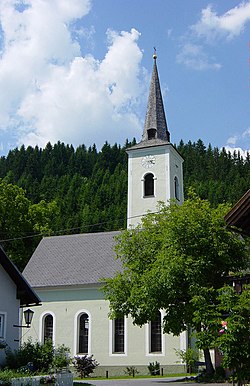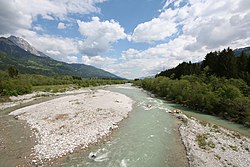Dellach | |
|---|---|
 St Nicholas Church | |
| Coordinates: 46°40′N13°4′E / 46.667°N 13.067°E | |
| Country | Austria |
| State | Carinthia |
| District | Hermagor |
| Government | |
| • Mayor | Johannes Lenzhofer (ÖVP) |
| Area | |
• Total | 36.53 km2 (14.10 sq mi) |
| Elevation | 672 m (2,205 ft) |
| Population (2018-01-01) [2] | |
• Total | 1,231 |
| • Density | 34/km2 (87/sq mi) |
| Time zone | UTC+1 (CET) |
| • Summer (DST) | UTC+2 (CEST) |
| Postal code | 9635 |
| Website | www.gemeinde-dellach.at [ permanent dead link ] |
Dellach (Slovene : Dole) is a municipality in the district of Hermagor, in the Austrian state of Carinthia.


